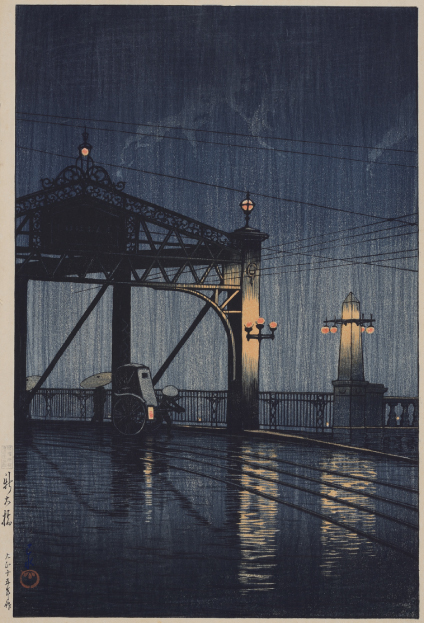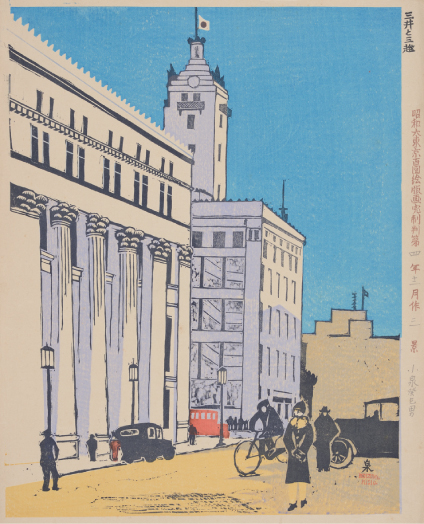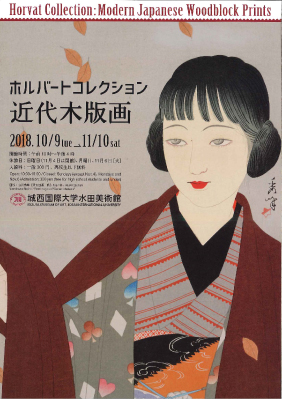
Every art collection reflects the tastes of its owner. My collection at first glance may appear to be disorganized. Modern city scenes are interspersed with portraits of women, many wearing Japanese kimono. While most prints focus on Japanese subject matter, a good many are from Japan’s once vast empire. These last prints are like postcards mailed from a forgotten past. Perhaps it is not a coincidence that most of my collection consists of prints produced between 1918 and 1941, the era that I cover in the history course I teach at JIU. In the scenes of Japan, we see cars, subways and concrete buildings while pictures of the colonies depict people in traditional dress walking past ancient buildings in quiet, bucolic surroundings.
Even prints that hardly merit our attention as works of art today convey feelings and attitudes from a distant past in an honest and candid manner. This is particularly true of Japanese woodblock prints which were not originally treated as art but rather as a form of information exchange, a precursor of today’s news media. In the Edo Period (1600-1868) prints were bought as souvenirs to be taken home to relatives and friends as a record of a pilgrimage to the Ise Shrine or a visit to Edo. Although twentieth century print-making had changed somewhat from traditional times, the prints of the interwar era stuck to traditional subject matter: impressive architecture, beautiful women, bucolic scenery and important events. Thanks to this reportorial aspect of the genre, many prints depict the Japanese Empire as considerably more cosmopolitan than we imagine today. Several of the prints on display are the work of French artist, Paul Jacoulet, one of several foreign print makers active in the Japanese print genre at the time. We see some excellent monochrome scenes of Korea by Hiratsuka Un’ichi one of many Japanese artists to tour the colonies at that time. A visit to a woodblock print shop fills in the pages missing from our history textbooks.
2018 Andrew Horvat

Kawase Hasui
“Twenty Views of Tokyo: Shin-Ohashi Bridge,”
1926, 38.6×25.9 cm

Koizumi Kishio
“One Hundred Pictures of Great Tokyo in the Showa Period: Scene 3, Mitsui Bank and Mitsukoshi Department Store,”
1929, 39.4×30.1 cm

Paul Jacoulet
“Genre Prints from Around the World: A Parisian Lady,”
1934, 49.0×37.1 cm




